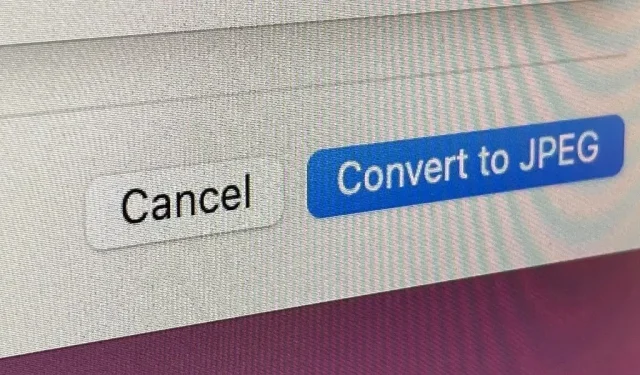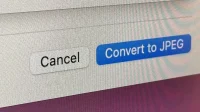If you regularly encounter problems opening images with. heic, the easiest solution is to convert the file to a more compatible format. Using apps like Photos and Preview on a Mac makes the process easier, but macOS Monterey has just simplified the process so you don’t even have to open the app anymore.
Starting with iOS 11, Apple supports the HEIF image format for images taken with the Camera app on iPhone. While these are the types of photos that use the. heic and. heics have been running on Macs since macOS High Sierra, there are still app developers and third-party devices that don’t fully support the High-Efficiency image file format. The new macOS 12 can help with this.
Why you might need to convert HEIC to other formats
On the iPhone, there are two ways to capture photos from the camera – high performance and most compatible – and you can set your preferred capture method in Settings -> Camera -> Formats. Simply put, High Efficiency uses an extension. heic and. heics (HEIF format), depending on the number of images inside the file, while Most Compatible uses. jpg or. jpegs (JPEG format).
The HEIF format is excellent because it compresses photos into smaller files than JPEG while maintaining image quality. Some might even say that overall image quality is better with HEIF. The problem is that not all programs and platforms support file types yet. heic and. heics. Therefore, depending on what you plan to do with your photo (open in an app, upload to a website, etc.), you may experience difficulties.
Large apps like Facebook, Twitter, and Flickr automatically convert a HEIF file to JPEG, but not all services do. For example, HEIF images are not compatible with the media library of WordPress.com websites. Some stock photography sites may not yet support HEIF, such as Unsplash which requires JPEG (.jpg,. jpeg) formats.
These are just a few examples of why generating HEIF images on your iPhone can cause problems. Apple made it an option in the Camera app settings, as HEIF support was sparse and far from always present when iOS 11 first came out, but it’s still an option, which means it’s still not universally supported. Prior to macOS Monterey, the main ways to avoid using HEIF were:
- Select “Most Compatible”in the Camera app settings on your iPhone. When taking photos, the default format is JPEG.
- Select “Automatic”in the Photos app settings on your iPhone. This will convert most HEIF files to JPEG whenever you transfer them to Mac or PC.
- Open the HEIF file in Photos or Preview on Mac, then select File -> Export -> [suggested file type].
- Use a third party desktop, mobile or web app to convert HEIF to other formats.
Converting HEIC to macOS Monterey is easy
macOS Monterey (version 12) has an easier option. If your Mac has a. heic or. heics, right-click the file, or Control-click the file to open the context menu. Image conversion also works with multiple files at once, so if you need to convert two or more images, save time by selecting them all before opening the context menu.
At the bottom of the menu, hover your mouse over “Quick Actions”and look for the new “Convert Image”option.
If you don’t see it, select “Customize”and make sure “Convert Image”is checked in the list of Finder extensions.
Selecting “Convert Image”will take you to a dialog box with several options. A HEIF image can be converted to either JPEG or PNG (.png) formats. You can also select the image size: small, medium, large, or original. For PNGs, the file size is usually larger than for JPEGs.
There is also a “Save Metadata”checkbox, which will save image data such as location, camera details, tags, and date/time.
When you’re ready, click “Convert to JPEG”or “Convert to PNG”. The converted copy(s) will appear in the same directory as the HEIF image or images.
The name of each converted file will remain the same except for the file extension. If you execute a single dialog from the Finder (instead of the desktop), this gives you the option to rename the file right away. If you do more than one, all files will be selected instead.
The Convert Image quick action can also convert other types of files to JPEG, PNG, or HEIF, such as JPEG, PNG, TIFF, GIF, Bitmap, and even Google WebP files, but it does not convert PDF files.
Besides working with multiple file types and batch conversion, you can also convert different file types at the same time. This means that you can convert a group of images in different formats to one format type.
Convert Image is a great addition to macOS that will make HEIF images easier to work with and share until the format becomes more common.


